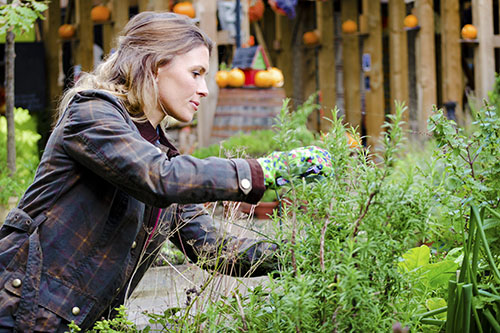Cover Your Soil
Oct 10, 2022

Fall is no time to let your garden remain dormant. Soil is meant to be covered, and unless you guide the growing process, weeds will likely take over your well-tended garden before planting time in the spring.
While many large-scale farmers employ cover crops, home gardeners can benefit from the same techniques in their vegetable beds. Just think of them as a protective blanket for the soil throughout the winter. Cover crops reduce soil compaction, capture excess nutrients, and prevent erosion, making the planting process much easier in the spring.
Cover crops can be annuals, biennials, perennials, or legumes — any plant that grows during the fall and can be plowed or tilled under in the spring. When plowed under, the cover crops add organic matter to the soil, building better soil structure and fertility. This organic matter is critical for maintaining the bacteria, fungi, earthworms, and other life forms needed to make healthy soil.
Choosing the correct cover crop depends largely on the region in which you live. Annual ryegrass and wheat can be planted through October, and winter rye can be planted as late as early November since it will germinate as low as 35°F. If you choose to use a legume, keep in mind that those plants are common in food plot blends for deer. Although they are a great choice to add nitrogen to your soil, you may have to build a fence to keep out wildlife. For the most accurate recommendations on the best cover crop to use, contact the agronomist at your local Co-op.
Before planting a cover crop, rake your garden area and remove debris and large stones. Broadcast the seed according to the recommended rates, lightly rake the area once more, and then water the seeds with a fine mist. To ensure a healthy start, add a complete fertilizer like 10-10-10 or a lower nitrogen fertilizer, such as 5-10-10, for legumes.
In the spring, turn under the crop at least two to three weeks before planting your garden to allow time for the organic matter to decompose. Cut down the plants before they flower to prevent them from becoming unwelcome weeds. If the crop is allowed to grow for too long, it may take up to five weeks before the plant breaks down into a form the new plant roots can use. In this case, simply pull up the plants, roots and all, and toss them into a compost bin for future use.
By planting a cover crop now, your garden will reward you with richer soil, fewer weeds, and a more bountiful harvest next year. Visit your local Co-op for seed, tools, and planting recommendations!
For more content like this, check out the latest issue of The Cooperator.
While many large-scale farmers employ cover crops, home gardeners can benefit from the same techniques in their vegetable beds. Just think of them as a protective blanket for the soil throughout the winter. Cover crops reduce soil compaction, capture excess nutrients, and prevent erosion, making the planting process much easier in the spring.
Cover crops can be annuals, biennials, perennials, or legumes — any plant that grows during the fall and can be plowed or tilled under in the spring. When plowed under, the cover crops add organic matter to the soil, building better soil structure and fertility. This organic matter is critical for maintaining the bacteria, fungi, earthworms, and other life forms needed to make healthy soil.
Choosing the correct cover crop depends largely on the region in which you live. Annual ryegrass and wheat can be planted through October, and winter rye can be planted as late as early November since it will germinate as low as 35°F. If you choose to use a legume, keep in mind that those plants are common in food plot blends for deer. Although they are a great choice to add nitrogen to your soil, you may have to build a fence to keep out wildlife. For the most accurate recommendations on the best cover crop to use, contact the agronomist at your local Co-op.
Before planting a cover crop, rake your garden area and remove debris and large stones. Broadcast the seed according to the recommended rates, lightly rake the area once more, and then water the seeds with a fine mist. To ensure a healthy start, add a complete fertilizer like 10-10-10 or a lower nitrogen fertilizer, such as 5-10-10, for legumes.
In the spring, turn under the crop at least two to three weeks before planting your garden to allow time for the organic matter to decompose. Cut down the plants before they flower to prevent them from becoming unwelcome weeds. If the crop is allowed to grow for too long, it may take up to five weeks before the plant breaks down into a form the new plant roots can use. In this case, simply pull up the plants, roots and all, and toss them into a compost bin for future use.
By planting a cover crop now, your garden will reward you with richer soil, fewer weeds, and a more bountiful harvest next year. Visit your local Co-op for seed, tools, and planting recommendations!
For more content like this, check out the latest issue of The Cooperator.